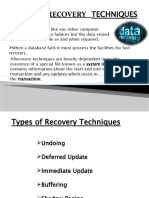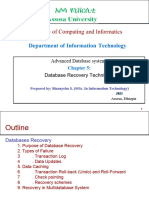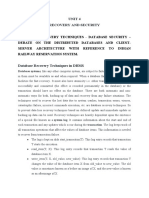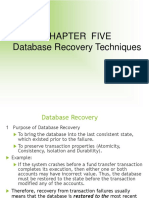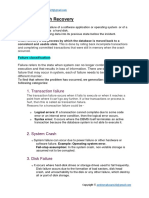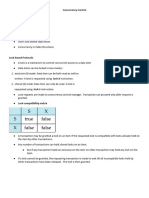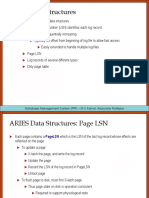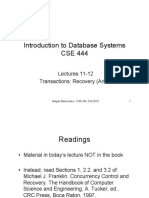0% found this document useful (0 votes)
114 views22 pagesAdvanced Database System Chapter 5
The document discusses database recovery techniques including log-based recovery, recovery through deferred update, recovery through immediate update, shadow paging, and the ARIES recovery algorithm. Log-based recovery uses log files to redo or undo transactions using different techniques to recover a database after a failure.
Uploaded by
adnanabdi4961Copyright
© © All Rights Reserved
We take content rights seriously. If you suspect this is your content, claim it here.
Available Formats
Download as PDF, TXT or read online on Scribd
0% found this document useful (0 votes)
114 views22 pagesAdvanced Database System Chapter 5
The document discusses database recovery techniques including log-based recovery, recovery through deferred update, recovery through immediate update, shadow paging, and the ARIES recovery algorithm. Log-based recovery uses log files to redo or undo transactions using different techniques to recover a database after a failure.
Uploaded by
adnanabdi4961Copyright
© © All Rights Reserved
We take content rights seriously. If you suspect this is your content, claim it here.
Available Formats
Download as PDF, TXT or read online on Scribd
/ 22








